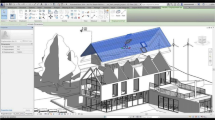Abstract
Biomimicry, bio-inspired design, biomimetic design are all terms used to describe the imitation of models, systems, and elements of nature for the purpose of solving complex human problems. Biomimetic approaches have recently been implemented in design thinking methods due to the global need to utilize technological advances and to meet competencies in all design-based disciplines. Many scholars have incorporated biomimetic design in architectural education to meet those competencies especially for enhancing creativity and complex problem solving. Although several studies have explored the adoption of biomimicry in design, and especially in architectural design education, almost none have developed a clear framework for this purpose. The most famous of those studies are the BID class at Georgia Institute of Technology held in 2011 and the ITECH approach at Stuttgart University carried out in 2018. This paper aims at establishing a framework of criteria for adopting biomimicry in architectural design education. This is achieved by means of a comparative analysis of current architectural design programs and experimental studies incorporating biomimetic design into their curricula in junior through senior levels. The previous mentioned experimental studies and other selected studies were reviewed and analysed, and their impact on students’ creativity was evaluated. Despite their varied approaches in teaching and varied tools in assessing the output, they all corroborated that biomimetic design functioned as a catalyst for creating a vibrant studio environment for design education and helped students in understanding the process of creative thinking and complex problem solving. The paper concludes that biomimetic design is interdisciplinary in nature and could be integrated in design curricula specifically at both junior and senior levels for the purpose of enhancing creativity. It is expected that the findings of this research would stimulate additional interest in the area of biomimicry and design thinking and contribute to developing a database of instructional resources, as well as new and effective teaching methods, to enhance the pedagogy of biomimetic design in architectural education.
Access this chapter
Tax calculation will be finalised at checkout
Purchases are for personal use only
Similar content being viewed by others
References
Durand F, Helms M et al (2015) Teaching students to innovate: evaluating methods for bioinspired design and their impact on design self efficacy. In: Proceedings of the ASME 2015 international design engineering technical conferences & computers and information in engineering conference, Boston, Massachusetts, USA
Eggermont M, McNamara C, Nagel JKS (2013) Can biomimicry enhance engineering education? In: 7th Annual biomimicry education summit and 1st global conference. Boston, MA
Glier MW, McAdams DA, Linsey JS (2011) Concepts in biomimetic design: methods and tools to incorporate into a biomimetic design course. In: Proceedings of ASME 2011 international design engineering technical conferences and computers and information in engineering conference, American Society of Mechanical Engineers, pp 655–660
Helms M, Goel A (2014) The four-box method of analogy evaluation in biologically inspired design. In: ASME 2014, International design engineering technical conferences & computers and information in engineering conference. Buffalo, NY
Knippers J, Menges A, Dahy H et al (2018) The ITECH approach: building(s) to learn. In: Proceedings of the IASS symposium 2018 creativity in structural design. MIT, Boston, USA
Nagel J, Pidaparti M et al (2016) Significance, prevalence and implications for bio-inspired design courses in the undergraduate engineering curriculum. In: Proceedings of the ASME 2015 international design engineering technical conferences & computers and information in engineering conference. Charlotte, North Carolina, USA
Siddique Z et al (2012) Competencies for innovating in the 21st century. In: ASME international conference on design education, DETC2012-71170. Chicago, IL
Vattam S, Wiltgen B, Helms M, Goel AK, Yen J (2010) DANE: fostering creativity in and through biologically inspired design. In: Proceedings of 1st international conference on design creativity. Kobe, Japan
Weissburg M, Tovey C, Yen J (2010) Enhancing innovation through biologically inspired design. Adv Nat Sci
Yen J et al (2014) Adaptive evolution of teaching practices in biologically inspired design. In: Goel AK, McAdams DA, Stone RB (eds) Biologically inspired design: computational methods and tools. Springer, New York
Yurtkuran S, Kırlı G, Taneli Y (2013) Learning from nature: biomimetic design in architectural education. In: 2nd Cyprus international conference on educational research (CY-ICER)
Author information
Authors and Affiliations
Corresponding author
Editor information
Editors and Affiliations
Rights and permissions
Copyright information
© 2020 The Editor(s) (if applicable) and The Author(s), under exclusive license to Springer Nature Switzerland AG
About this paper
Cite this paper
Omar, M., Kamel, S., Hassan, D., Abdelmohsen, S. (2020). Biomimetic Approaches in Architectural Design Education. In: Kamel, S., et al. Architecture and Urbanism: A Smart Outlook. Springer, Cham. https://doi.org/10.1007/978-3-030-52584-2_2
Download citation
DOI: https://doi.org/10.1007/978-3-030-52584-2_2
Published:
Publisher Name: Springer, Cham
Print ISBN: 978-3-030-52583-5
Online ISBN: 978-3-030-52584-2
eBook Packages: HistoryHistory (R0)




